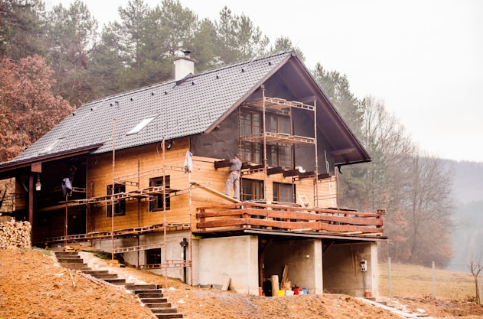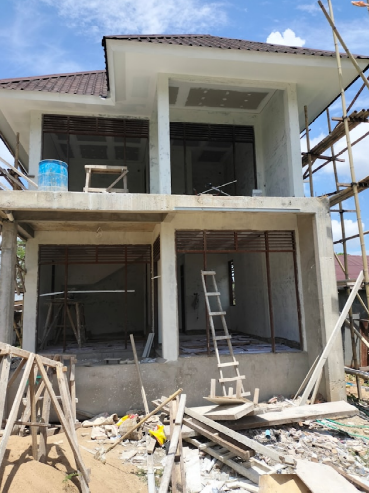
In residential design, blending new construction with renovations is becoming an increasingly popular trend. Homeowners are seeking ways to modernize their spaces without sacrificing the character of their existing homes, especially when they want to preserve historical or architectural integrity while also enjoying the benefits of modern construction. This approach is a blend of creativity and technical expertise that allows building contractors in Maine to create spaces that reflect both the past and present, seamlessly merging old with new. As construction methods continue to advance, the potential for crafting cohesive, functional spaces has expanded, especially for homes in areas with a rich architectural history.
Whether you're taking on a full-scale renovation or considering a modest addition to your home, understanding how to combine old and new can result in a space that is not only aesthetically pleasing but also highly functional.
The Art of Merging
The goal is to create a cohesive, harmonious design that respects the existing structure while integrating the new. Whether you're transforming a century-old house, adding a modern extension to a coastal home, or converting a traditional farmhouse into a more contemporary living space, there are several key considerations.
Retaining Architectural Integrity
One of the most significant factors when blending new construction with an older home is retaining the character of the original structure. Homeowners often want to preserve the historic charm, craftsmanship, and architectural features that make the property unique, yet they also want to incorporate modern comforts. If your home is in New Jersey, Magnolia is a local home renovation contractor that specializes in the different local designs either if it is warm country aesthetic or a modern minimalist style.
Skilled professionals can blend elements like classic brickwork, original wood beams, or antique windows with contemporary materials such as sleek glass, polished concrete, or metal framing. A modern kitchen might feature a minimalist design with clean lines and stainless steel appliances, but the cabinetry could be crafted in the style of the original home, using reclaimed wood or vintage detailing.
The key to preserving this architectural harmony is understanding the history of the home and how to integrate modern elements without disrupting its aesthetic. This often requires a delicate balance of old-world charm and cutting-edge construction techniques.
Thoughtful Design Integration
A thoughtful, well-executed design can make the difference between a renovation that feels disconnected and one that feels like a natural progression of the home. It's crucial to think about the flow of the space and how each addition will tie in with the original structure.
For example, new flooring should match the aesthetic of the existing home. Traditional homes with rich wood floors may benefit from new hardwood flooring that complements the tone, style and grain of the old. In some cases, reclaimed wood or antique flooring can be incorporated into new spaces to create continuity and a sense of timelessness.
New construction can sometimes bring about structural changes, such as expanding a room or adding a new level to the home. Ensuring that the new section aligns with the style, proportion, and form of the original structure is crucial. Builders will integrate the two components by aligning architectural lines, choosing appropriate materials, and creating a smooth transition between the old and new.
Maintaining Cohesive Materials and Textures
Choosing the right materials is another essential aspect in a home. To ensure that the new construction feels like part of the original home, it's important to use materials that are cohesive with the existing structure.
For instance, if the original home features traditional brickwork, a new addition may benefit from using brick that matches the old or complements it with similar textures. Stone and wood are also popular materials that work well in this context, as they can create a rustic yet modern aesthetic when combined with sleek, clean lines of new construction.
For homes located in rural or coastal areas, using local materials can also enhance the home’s connection to the landscape. Incorporating natural stone from a nearby quarry or salvaging wood from fallen trees or barns for new projects can give the home a sense of place, blending the built environment with its natural surroundings.

Experienced Builders Bring Old and New Together
When updating an older home or including a new section, selecting the proper crew is important. A trusted luxury custom home builder in rockwall tx can guide you through the process with care and skill. These experts know how to match the look and feel of your home while using durable, modern materials. They focus on both beauty and function, ensuring the new additions blend perfectly with the old ones. With their help, you can enjoy a home that feels fresh, comfortable, and full of character.
Maximizing Space Efficiency
Blending new with old is not just about looks; it’s about maximizing space to meet the needs of modern living. Many older homes were built with smaller footprints or outdated layouts that don't align with contemporary lifestyles. By working with the original structure, homeowners can expand their spaces in ways that make the home more functional while maintaining the original charm.
Adding a modern extension to an old farmhouse may allow for the creation of an open concept living and dining area, something that might not have been part of the home’s original design. Combining the two sections can preserve the home’s old-world character while improving flow and creating additional space for contemporary needs.
Implementing Sustainable Practices
Incorporating sustainability into a renovation project is an increasingly popular trend. As homeowners seek to reduce their environmental impact, they are looking for ways to integrate energy-efficient materials, eco-friendly construction practices, and sustainable technologies into their homes.
This offers a unique opportunity to introduce sustainable upgrades without disrupting the overall aesthetic. For instance, adding energy-efficient windows to an existing structure, installing solar panels on a newly built section, or incorporating modern insulation materials can significantly improve a home's energy efficiency.
Incorporating sustainable design into both the renovation and new construction parts of the project ensures that the home remains energy-efficient and environmentally responsible, while still honoring its original form.
The Challenges of Blending Old and New
While blending new construction with renovations offers many benefits, it also presents several challenges that require careful planning and expertise. One of the biggest obstacles is managing the complexities of local building codes and zoning regulations. Historical homes, in particular, may be subject to stricter guidelines to ensure that renovations do not compromise the property's architectural integrity.
Additionally, managing the timeline and budget for projects that involve both renovation and new construction can be more complex. There may be unexpected surprises when working with older structures, such as the discovery of hidden damage or the need for extensive repairs to the foundation or wiring.
Fortunately, working with experienced professionals who understand both the technical and creative aspects of these projects can ensure that challenges are managed efficiently, keeping the project on track and within budget.
Conclusion
Blending new construction with older homes is an art that requires a skilled hand and a deep understanding of both traditional and modern design principles. Whether you're upgrading your home to meet modern living standards or expanding your living space, this approach offers a way to preserve the charm and history of your home while incorporating the latest in design, technology, and sustainability.
By carefully selecting materials, maintaining continuity in design, and working with professionals who understand the intricacies of both new and old construction, you can create a space that feels cohesive and timeless. In the end, the goal is not just to build a home, but to craft a place where the old and new coexist in perfect harmony.